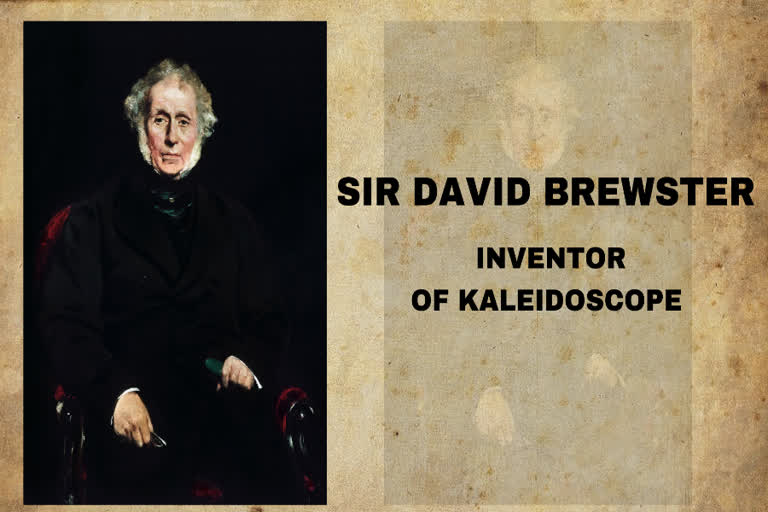Hyderabad: Sir David Brewster(1781-1868) was the man behind the invention of the kaleidoscope in 1816. He named his invention using Greek words: Kalos meaning beautiful, Eodos meaning shape, and scopeo meaning to look at; which all together combined to mean beautiful form watcher.
After inventing the kaleidoscope in 1816, he went on to make improvements to the stereoscope by utilizing lenses to combine two dissimilar binocular pictures, producing a three-dimensional effect.
It was Brewster's research on the construction of the lens of the eye which confirmed the existence of an ordered fibrous arrangement of its parts. Using simple apparatus, Brewster discovered many beautiful optical effects and succeeded in relating optical properties to crystal symmetry.
He is well-recognized for being the inventor of the kaleidoscope and an improved version of the stereoscope applied to photography. He called it the "lenticular stereoscope", which was the first portable, 3D viewing device.
He also invented the binocular camera, two types of polarimeters, the polyzonal lens and the lighthouse illuminator.
For his work, William Whewell dubbed him the "Father of modern experimental optics" and "the Johannes Kepler of Optics."
- He published his Treatise on the kaleidoscope in 1819. Together with the mineralogist Professor Robert Jameson, he edited the Edinburgh philosophical journal, previously called the Edinburgh magazine, and in 1819 when the name changed again to the Edinburgh journal of science he was the sole editor.
- In 1820, Brewster became a member of the Institute of Civil Engineers in London, and in 1821 he was active in the formation of the Royal Scottish Society of Arts of which he became director.
- In 1822, he became a member of the Royal Irish Academy of Arts and Sciences.
- Other published work in the year 1829 includes the periodical colours produced by grooved surfaces, the optical nature of the crystalline lens, and the colours of film plates.
- In 1827, he published his account of a new system of illumination for lighthouses.
- In 1831, in York, he was among those who set up the British Association for the Advancement of Science.
- In December 1837, he became the Principal of the United College of St. Salvator and St. Leonard at St. Andrews University.
- In 1859 he became Principal of Edinburgh University.
He was Principal of the University of Edinburgh; a writer on optics and astronomy; a corresponding member of the Institute of France, and the Royal Academies of Russia, Prussia, Sweden, and Denmark; first director of the Royal Scottish Society of Arts.
David Brewster was born in Jedburgh on 11 December 1781. His father was James Brewster, rector of Jedburgh Grammar School. At the age of twelve, in 1793, Brewster began following classes at Edinburgh University with the ambition of going to the Church. In 1799, he became tutor to the Horsbrugh family in Pirn, Peebleshire, and in 1802 he was the editor of the Edinburgh Magazine. Licensed to preach by the presbytery of Edinburgh, Brewster gave his first sermon in March 1804 but nervousness led him to abandon this career. In 1804 he became tutor to a family in Dumfriesshire and he remained there until 1807 while he pursued scientific studies and the study of literature.
He became the public face of higher education in Scotland, acting as Principal of the University of St Andrews and then Edinburgh between 1837 and 1868. Brewster also edited the 18-volume Edinburgh Encyclopædia.
Sir David Brewster, Knight, Principal of the Edinburgh University, died on 10 February 1868 at his home, Allerly.



